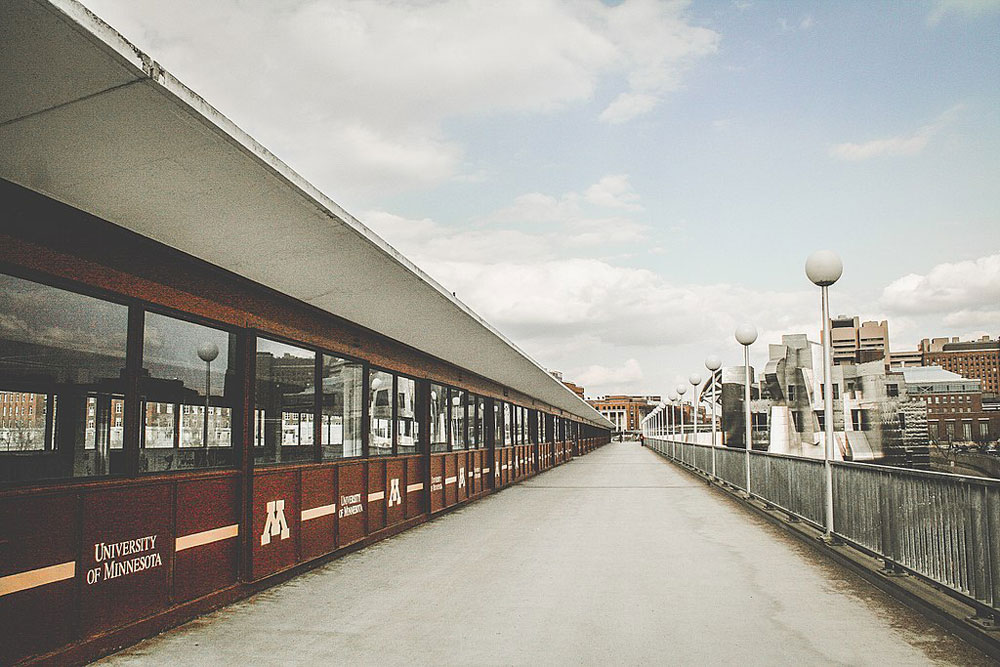
June 29, 2020; MinnPost
Earlier this month, at NPQ we noted that with the pandemic “some fear students will just take the fall semester off,” and many expected that first-year students might opt to delay enrollment until a vaccine for the pandemic was developed.
But Greta Kaul of MinnPost finds that, at least in Minnesota, student enrollment seems to be holding steady. For the University of Minnesota-Twin Cities campus, she writes, “the freshman class is expected to be similar in size, but a different mix of students than in recent years due to COVID-19.”
Overall, the anticipated enrollment drop seems “to not be the case for many schools in Minnesota, though some report delayed student decisions or slight to moderate declines in enrollment.”
For example, Gustavus Adolphus College had to cancel in-person tours and develop virtual tours for prospective students. Nonetheless, incoming class numbers look pretty normal, according to Richard Aune, the school’s dean of admission.
As for the University of Minnesota-Twin Cities campus, Kaul explains that class composition has changed, but numbers are steady. Last fall, 67 percent of first-year undergraduates came from Minnesota, 13 percent were from nearby states, 11 percent came from other states, and nine percent were international. This year, Robert McMaster, dean of undergraduate education, reports, “We will have a much stronger upper Middle West, Minnesota presence in the freshman class.”
International student enrollment is down 23 percent, McMaster notes. “There are serious concerns about students being able to get a visa to come into the United States.” The school also has 14 percent fewer students from US states other than Minnesota, Wisconsin, or the Dakotas. In other words, students this year appear to be opting to stay closer to home. Meanwhile, McMaster notes that confirmed new students from Wisconsin and the Dakotas are up by ten percent.
Sign up for our free newsletters
Subscribe to NPQ's newsletters to have our top stories delivered directly to your inbox.
By signing up, you agree to our privacy policy and terms of use, and to receive messages from NPQ and our partners.
All told, as of June 8th, the Twin Cities campus had 6,776 freshmen confirmed, up from 6,733 at the same time last year. Kaul adds that the University of Minnesota’s Duluth and Rochester campuses also had more students confirmed as attending as of early June this year than they did last year.
Not every school’s enrollment is holding steady, however. For instance, as of June 21st, enrollment in the Minnesota State system is down 13 percent compared to the same time last year, more on some campuses than others. Communications Director Doug Anderson tells Kaul that a key reason is that the system’s 30 colleges and seven universities serve many of Minnesota’s economically fragile students, who are hit hardest by the pandemic—yet another indicator of how the pandemic is exacerbating pre-existing racial and class inequality.
Kaul adds that the University of Minnesota’s Morris and Crookston campuses also are reporting lower admissions. At Morris, according to Allison Friedly, the school’s director of communications and marketing, as of June 8th, the school had 293 confirmed freshmen, compared to 355 at the same time last year.
However, even these declines are less than many feared. Why? One reason may be that colleges are promising on-campus classes—in other words, if public health requirements make in-person classes inadvisable, cancellations may still result.
Another factor that’s keeping enrollments high, however, is economic—namely, massive unemployment. As Kaul points out, “It may well be that the uncertainty caused by COVID-19 drives more students toward college in the coming weeks, and even years, if the economic fallout of the pandemic is severe. Every recession since the 1960s has seen some level of increased college attendance.” Also, as Kaul mentions, the pandemic “makes the prospect of taking a gap year to travel less attractive, or even impossible.”
Allan Cotrone, vice president for enrollment management at St. Thomas University, which has similar enrollment as last year, concurs. Historically, Cotrone remarks, “a fair number of students who, if there’s a really robust economy will maybe try to stay in the workforce and forgo college, they will now go to college during this down economic time.”—Steve Dubb












